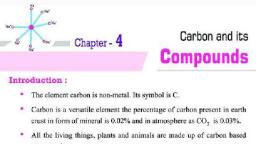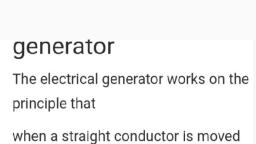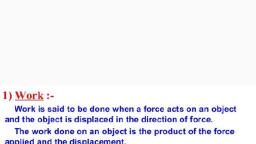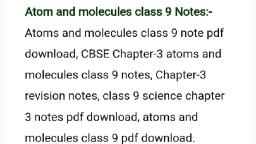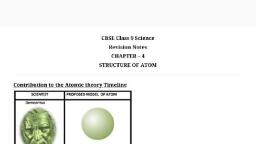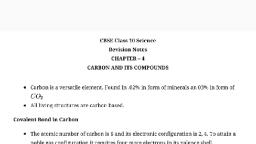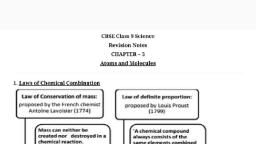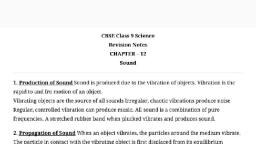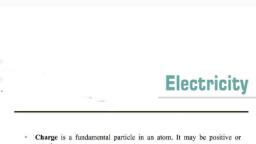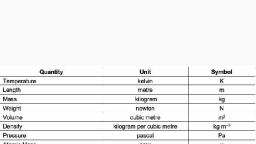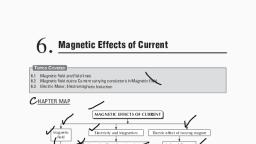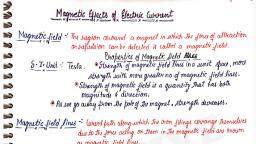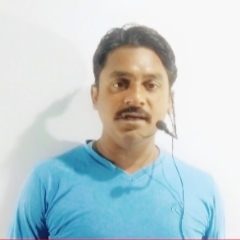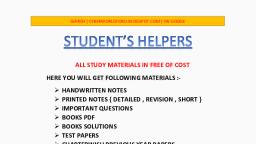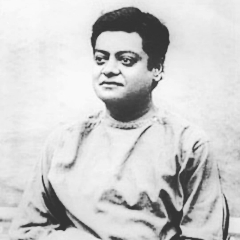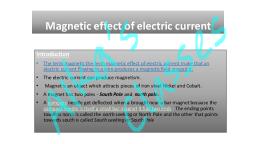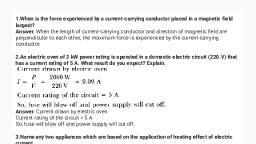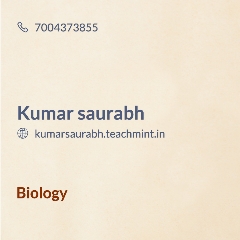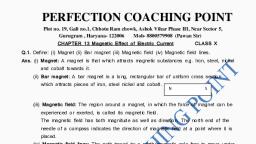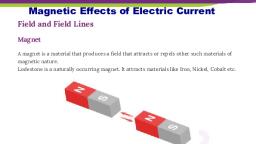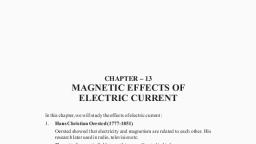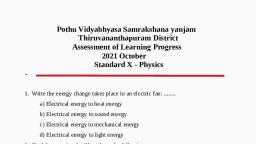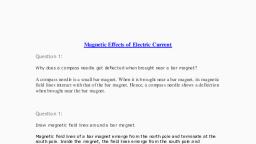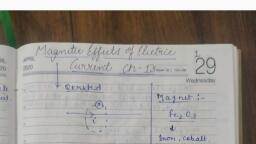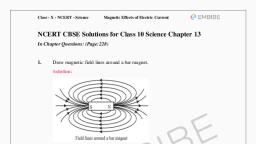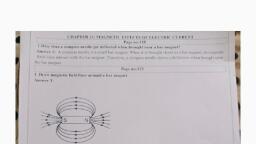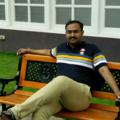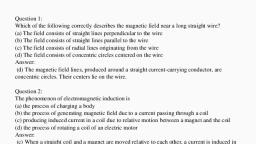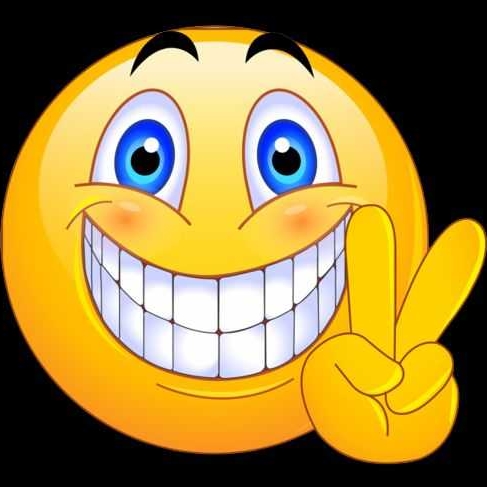Page 1 :
mou Magnetic Effects, , ies Chapter - 13 Of Electric, Current, , , , , , Magnet is any substance that attracts iron or iron-like substances., Properties of Magnet, , (i) Every magnet has two poles i.e., North and South., , (ii) Like poles repel each other., , (iii)Unlike poles attract each other., , (iv)A freely suspended bar magnet aligns itself in nearly north-south, direction, with its north pole towards north direction., , Magnetic Field : The area around a magnetic in which its magnetic force can, be experienced., , * Its SI unit is Tesla (T)., , * Magnetic field has both magnitude and direction., , * Magnetic field can be described with help of a magnetic compass., , * The needle of a magnetic compass is a freely suspended bar magnet., Characteristics of Field Lines, , (i) Field lines arise from North pole and end into South pole of the magnet., , (ii) Field lines are closed curves., , (iii)Field lines are closer in stronger magnetic field., , (iv)Field lines never intersect each other as for two lines to intersect, there, must be two north directions at a point, which is not possible., , —
Page 2 :
(v) Direction of field lines inside a magnet is from South to North., , (vi) Therelativestrength ofmagnetic field isshownby degree of closeness of field, lines., , Magnetic Field of a Bar Magnet, , , , H. C. Oersted was the first person to state that electric current has magnetic, field., , Right Hand Thumb Rule, , Imagine you are holding a current carrying straight conductor in your right, hand such that the thumb is pointing towards the direction of current. Then the, fingers wrapped around the conductor give the direction of magnetic field., , , , , Magnetic Field, , Magnetic Field Due to Current Through a Straight Conductor, , It can be represented by concentric circles at every point on conductor., Direction can be given by right hand thumb rule or compass., , Circles are closer near the conductor., , Magnetic field oc Strength of current, , Magnetic field « — E, , Distance from conductor
Page 3 :
Magnetic Field Due to Current Through a Circular Loop, , It can be represented by concentric circle at every point., , Circles become larger and larger as we move away., , Every point on wire carrying current would give rise to magnetic field, appearing as straight line at centre of the loop., , The direction of magnetic field inside the loop is same., , , , Factors affecting magnetic field of a circular current carrying conductor, , Magnetic field « Current passing through the conductor, 4, from conductor, , Magnetic field o No. of turns in the coil, , Magnetic field o, , Magnetic field is additive in nature i.e., magnetic field of one loop adds up to, magnetic field of another loop. This is because the current in each circular, turn has some direction., , Solenoid, , A coil of many circular turns of insulated copper wire wrapped closely in a, cylindrical form.
Page 4 :
* Magnetic field of a solenoid is similar to that of a bar magnet., , * Magnetic field is uniform inside the solenoid and represented by parallel field, lines., , * Direction of magnetic field, (i) Outside the solenoid : North to South, (ii) Inside the solenoid : South to North, , * Solenoid can be used to magnetise a magnetic material like soft iron., , , , , , , , , , ‘ai, y = ‘, <<, => —, (C pre _, ee, aoe, ( Electromagnet ) Permanent Magnet >, 1. It is a temporary magnet, so, 1. Cannot be easily, can be easily demagnetised. demagnetised., 2. Strength can be varied. 2. Strength is fixed., 3. Polarity can be reversed. 3. Polarity cannot be reversed., 4. Generally strong magnet. 4. Generally weak magnet., , Force on a Current carrying Conductor in a Magnetic Field, , Andre Marie Ampere suggested that the magnet also exerts an equal and, opposite force on a current carrying conductor., , , , , , The displacement in the conductor is the maximum when the direction of, current is at right angle to the direction of magnetic field., , Direction of force is reversed on reversing the direction of current.
Page 5 :
Fleming’s Left Hand Rule, , Stretch the thumb, fore finger and middle finger of your left hand such that they, are mutually perpendicular. If fore finger points in the direction of magnetic, field, middle finger in the direction of current then thumb will point in the, direction of motion or force., , Field, , , , , Thumb-Motion Current, , Force, , Current, , Electric Motor, , A motor is a device which converts electrical energy into mechanical energy., Electric motor is used in electric fans, washing machines refrigerators, mixer, and grinder and other appliances., , Principle of a Motor :, , An electric motor utilizes the magnetic effect of current. It works on the principle, that when a rectangular coil is placed in a magnetic field and current is passed, through it a torque acts on the coil which rotates it continuously. When the, coil rotates the shaft to it also rotates and electrical energy supplied to the, motor is converted into mechanical energy., , Construction of a Motor :, , 1. Armature Coil : An electric motor consists of an rectangular coil ABCD of, insulated copper wire wound on a soft iron core called armature., , 2. Strong Field magnet. : The coil (armature) is placed between two poles of a, strong magnet such that arm AB and CD are perpendicular to the direction of, the magnetic field., , 3. Split ring type commutator : It consists of two halves of a metallic ring, named as P and Q. The two ends of armature coil are connected to these two, halves of ring. The function of commutators is that it reverses the direction, of current in armature coil.

